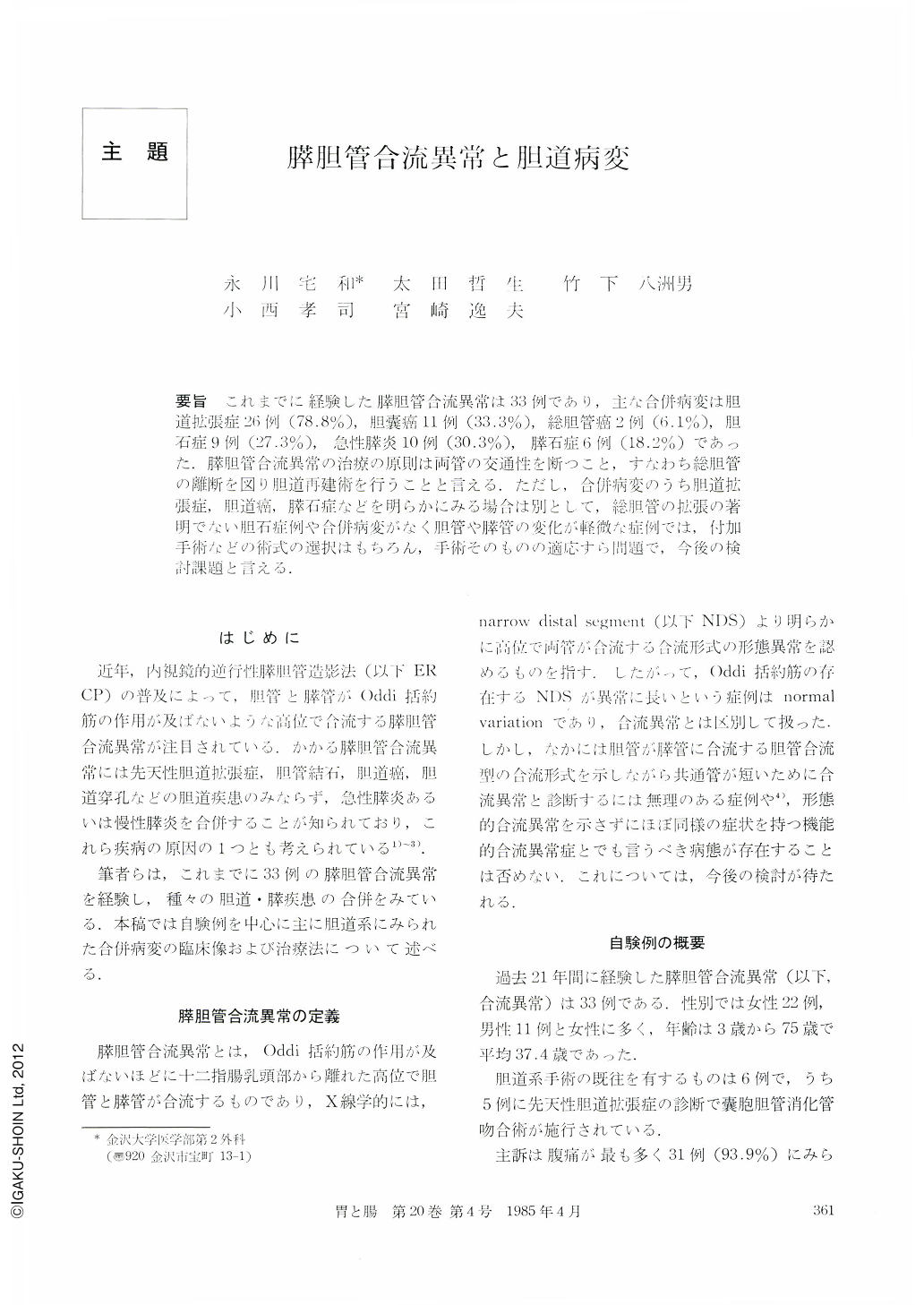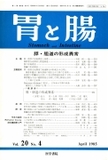Japanese
English
- 有料閲覧
- Abstract 文献概要
- 1ページ目 Look Inside
要旨 これまでに経験した膵胆管合流異常は33例であり,主な合併病変は胆道拡張症26例(78.8%),胆嚢癌11例(33.3%),総胆管癌2例(6.1%),胆石症9例(27.3%),急性膵炎10例(30.39%),膵石症6例(18.3%)であった.膵胆管合流異常の治療の原則は両管の交通性を断つこと,すなわち総胆管の離断を図り胆道再建術を行うことと言える.ただし,合併病変のうち胆道拡張症,胆道癌,膵石症などを明らかにみる場合は別として,総胆管の拡張の著明でない胆石症例や合併病変がなく胆管や膵管の変化が軽微な症例では,付加手術などの術式の選択はもちろん,手術そのものの適応すら問題で,今後の検討課題と言える.
Thirty-three patients have been treated for abnormal union of the pancreatico-biliary duct system forming the so-called elongated common channel in which the bile duct and pancreatic duct join too soon at a position far away from the duodenal papilla. This phenomenon was accompanied by bile duct dilatation in 26 cases, gallbladder cancer in 11 cases, bile duct cancer in two cases, choledocholithiasis in nine cases, pancreaticolithiasis in six cases, and acute pancreatitis in 10 cases.
As as urgical treatment of this abnormality accompanied by such diseases as have just been mentioned, the excision of the dilated bile duct and biliary diversion have usually been carried out to separate both ducts.
However, some patients with this condition don't seem to be very adversely effected and there is no dilatation of the ducts. In these cases there is room for discussion of not only what operative procedures should be followed, but also whether surgical treatment should be used.

Copyright © 1985, Igaku-Shoin Ltd. All rights reserved.


